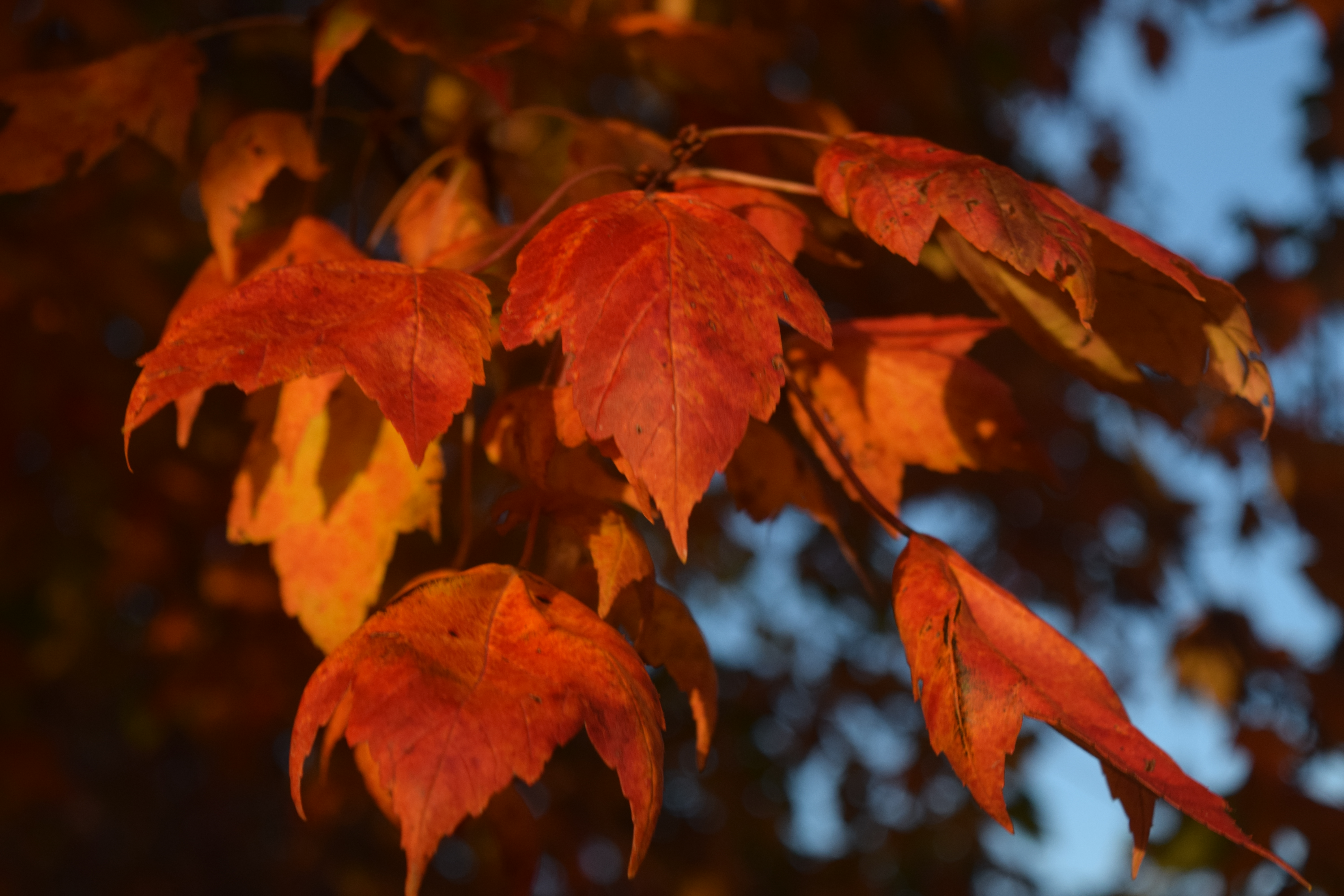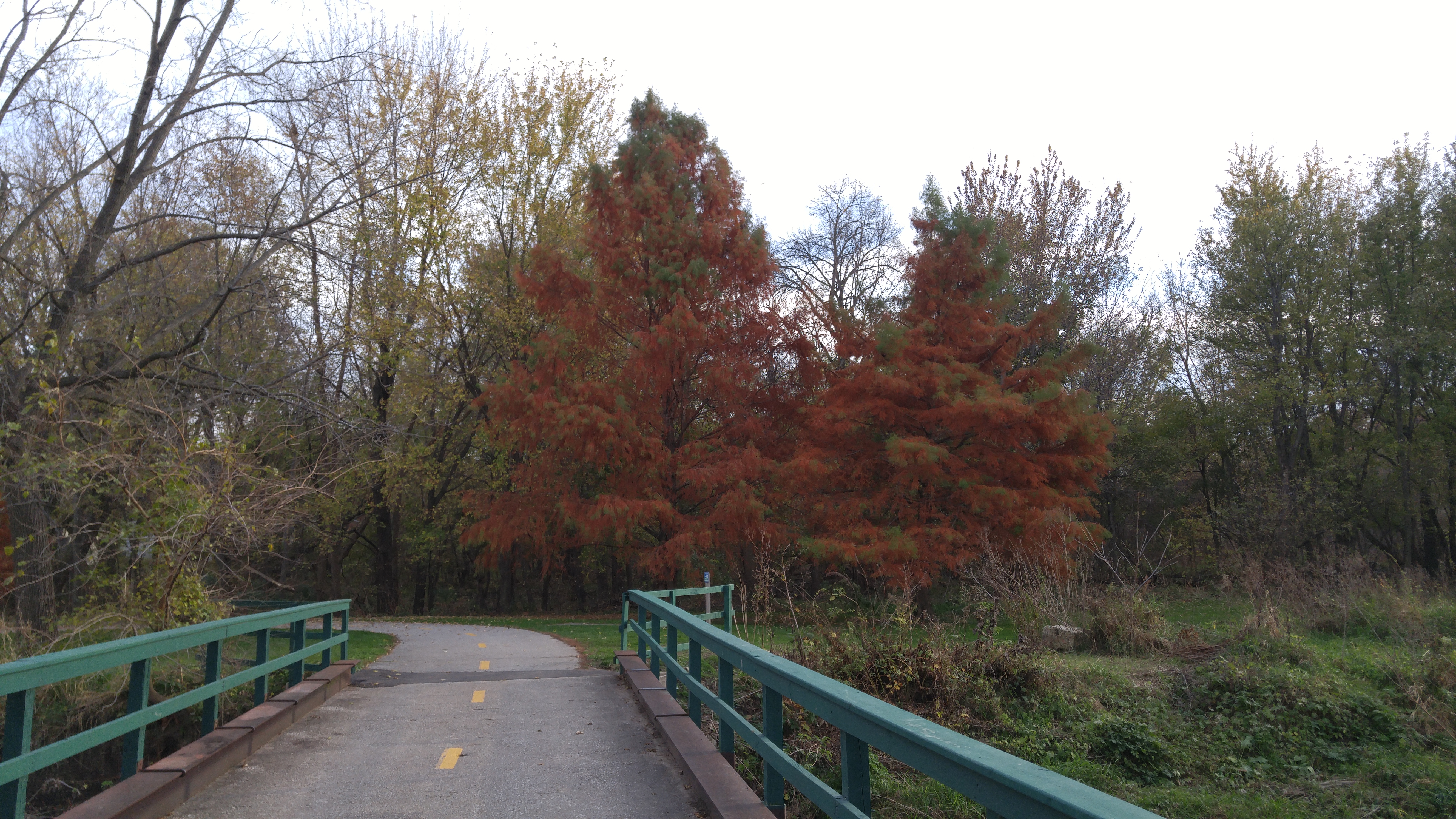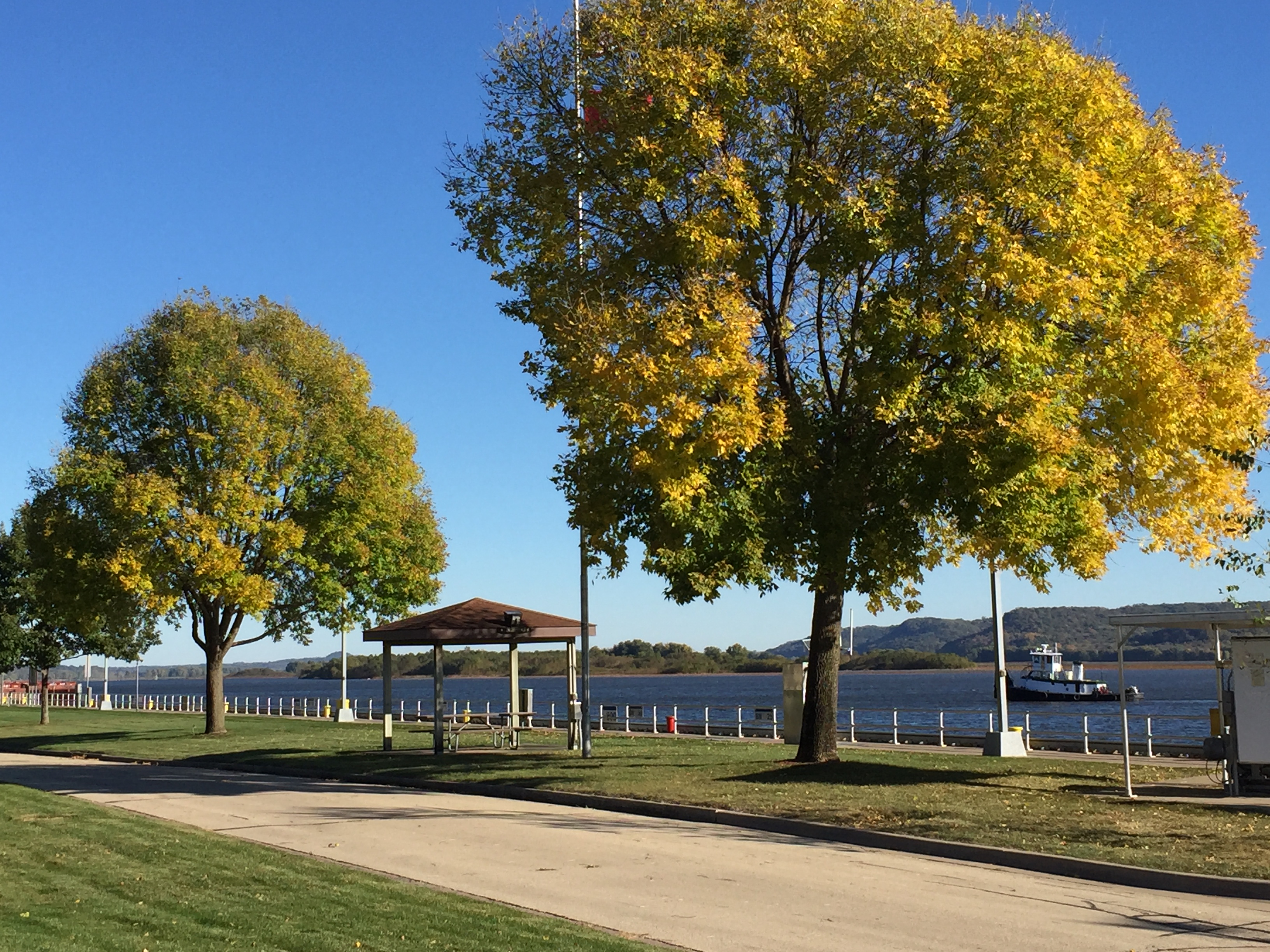Quad Cities, IA/IL
Weather Forecast Office
Click on each state below for the latest fall color updates!
|
|
 |
|
___________________________________________________________________________________________________________________________________
 |
 |
 |
Why Do We See Different Colors in the Fall?
(Courtesy National Weather Service Central Illinois)
Many people think that cold weather is solely responsible for the color change in leaves, but not so. Leaves begin to turn before we have any frosts. Change in coloring is the result of chemical processes, which take place in the tree as the seasons change.
During the spring and summer, a food-making process takes place in the leaves, within cells containing the pigment chlorophyll. This gives the leaf its green color. The chlorophyll absorbs energy from sunlight, and uses it in transforming carbon dioxide and water to carbohydrates, such as sugars and starch.
In the fall, the decrease in intensity and duration of sunlight, and the cooler temperatures, cause the leaves to stop their food-making process. The chlorophyll breaks down, the green color disappears, and the yellowish colors or other pigments already in the leaf become visible.
Autumn weather conditions favoring the most brilliant colors are warm sunny days and cool, but not freezing, nights. A few hard frosts can cause the leaves to wither and fall from the tree without changing color. The degree of color may also vary from tree to tree. Leaves directly exposed to the sun may turn red, while those on the shady side may be yellow. When warm, cloudy and rainy weather dominates the fall season, leaves tend to have less coloration.
Fall colors usually peak from early to mid October over eastern Iowa and northwest Illinois, to late October in southeast Iowa, west central Illinois and northeast Missouri.
Additional Links and Information:
Fall Colors Across the U.S. - National Forest Service
Cool Autumn Weather Reveals Nature’s True Hues
Hazardous Weather
Watches, Warnings, & Advisories
Briefing
Hazards Page
View Local Storm Reports
Submit Report
Road Reports
Text Products
Forecasts
Fire Weather
Briefing
Hourly Forecast Graphs
Forecast Discussion
User-Defined Area
Activity Planner
Local Forecasts
Space Weather
Text Products
River Graphs
Airport Forecasts
Snow and Ice Probabilities
Winter Storm Severity Index (WSSI)
Current Conditions
Observations
Radar
Satellite
Rivers and Lakes
River Graphs
Road Reports
Drought Monitor
Text Products
Sunrise/Sunset Tables
Seasons (Equinoxes/Solstices)
Past Weather
Climate Maps
Climate Normals/Averages
Climate Records
Climate/Almanac Data
Recent Observation History
Climate Graphs
Climate Summaries
Observation Site History
Past Events
Text Products
Sunrise/Sunset Tables
US Dept of Commerce
National Oceanic and Atmospheric Administration
National Weather Service
Quad Cities, IA/IL
9040 N Harrison Street
Davenport Municipal Airport
Davenport, IA 52806-7326
563-386-3976
Comments? Questions? Please Contact Us.



